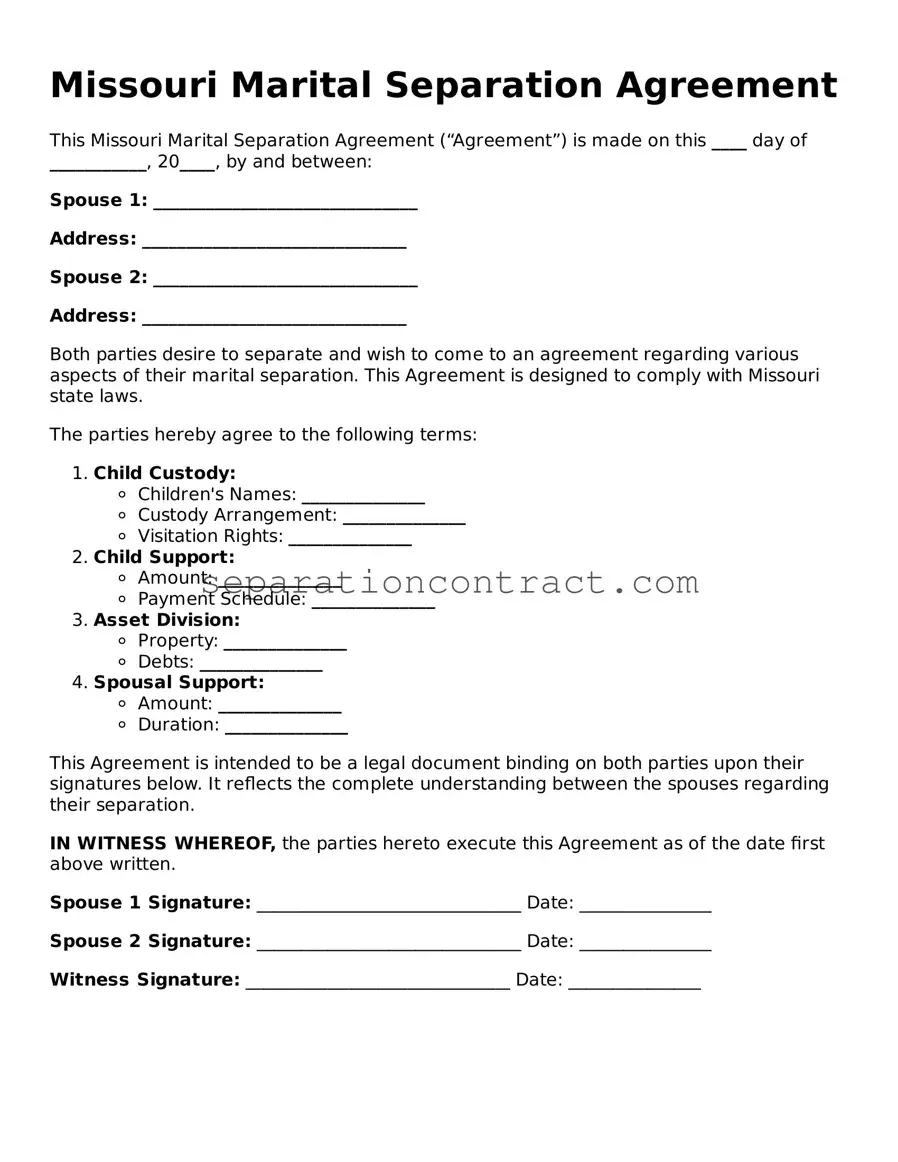Filling out the Missouri Marital Separation Agreement form can be a daunting task, and it’s easy to make mistakes that could affect your future. One common error is failing to provide complete information. When sections are left blank or filled out with vague details, it can lead to confusion and potential disputes later on. Always ensure that every applicable field is filled out accurately.
Another frequent mistake is not clearly defining the terms of the agreement. Ambiguity can lead to misunderstandings between both parties. For example, if you agree on child custody arrangements but do not specify visitation schedules, it may cause conflict down the line. Clear, concise language helps both parties understand their responsibilities and rights.
People often overlook the importance of including all assets and debts in the agreement. Leaving out significant items can lead to complications during the separation process. It’s crucial to list all marital property and liabilities to ensure a fair division. This not only protects your interests but also promotes transparency between both parties.
Many individuals fail to consider the tax implications of their separation. Decisions regarding asset division can have long-term financial consequences. It’s wise to consult with a tax professional to understand how your agreement might affect your tax situation. Planning ahead can save you from unexpected financial burdens later on.
Another mistake is neglecting to have the agreement reviewed by a legal professional. While it may seem straightforward, legal language and requirements can be tricky. Having an attorney review your agreement ensures that it complies with Missouri laws and protects your rights. This step can prevent potential legal issues in the future.
Lastly, some people forget to keep copies of the signed agreement. Once finalized, it’s essential to have multiple copies for both parties and any relevant institutions. This ensures that everyone involved has access to the same information, reducing the likelihood of disputes or misunderstandings later on.
